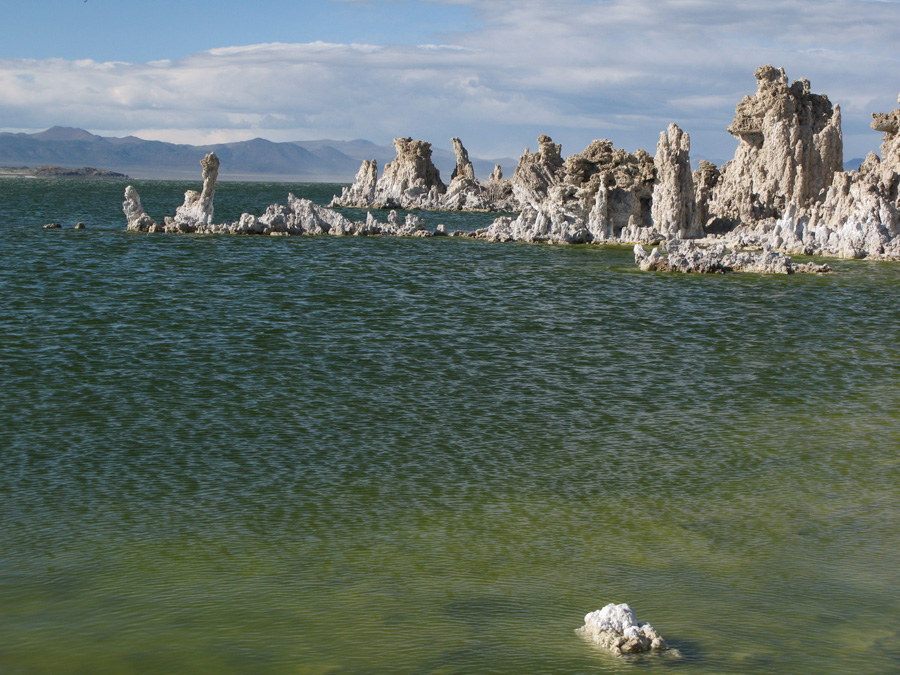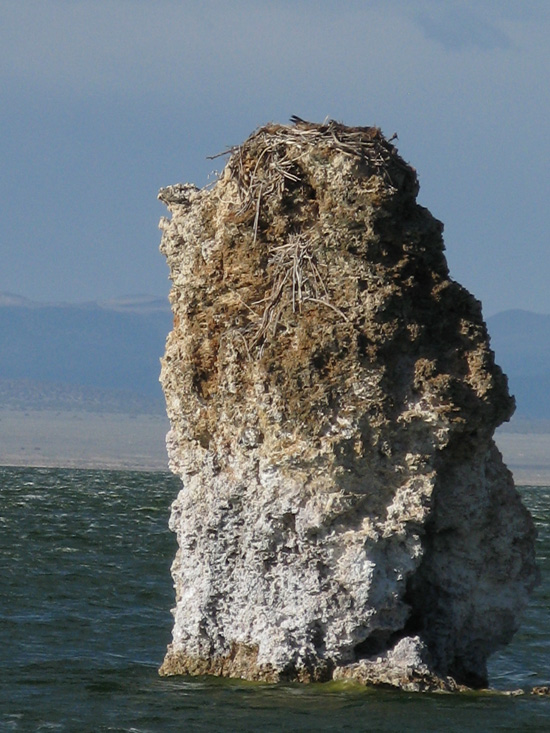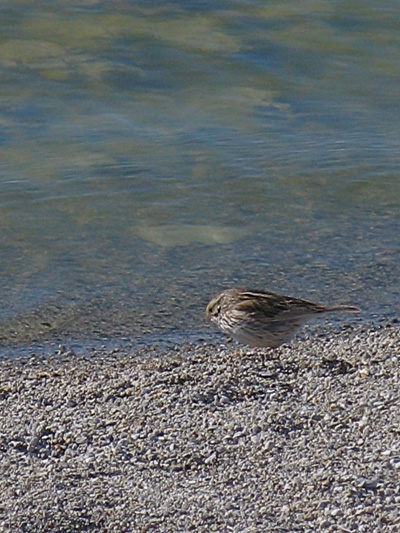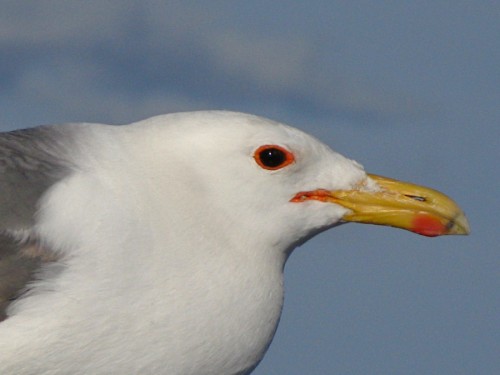Mono birds and tufa
 One of our destinations during the recent eastern California trip was the dramatic and amazing Mono Lake and its crumbly, gradually ephemeral tufa groves. Tufa towers are mineral formations deposited underwater when calcium-rich spring water pours up into
One of our destinations during the recent eastern California trip was the dramatic and amazing Mono Lake and its crumbly, gradually ephemeral tufa groves. Tufa towers are mineral formations deposited underwater when calcium-rich spring water pours up into  carbonate-rich lakewater. The resulting mixture precipitates calcium-carbonate which builds upward into the lake water, sort of like stalagmites in a cave, but underwater. If the lake level drops or the lake dries up, the towers are exposed (like the Trona Pinnacles).
carbonate-rich lakewater. The resulting mixture precipitates calcium-carbonate which builds upward into the lake water, sort of like stalagmites in a cave, but underwater. If the lake level drops or the lake dries up, the towers are exposed (like the Trona Pinnacles).
>> Osprey-nested tufa tower, Mono Lake. The tips of the hen’s primaries look like a little black alligator head, if you click to enlarge.
Lots of birds and mammals use the pinnacles to perch, shelter, forage, and nest. This tufa tower, about 15 feet tall, is completely surrounded by water — a pair of ospreys has built their nest on the platform of its top. The Osprey hen, sitting tight on either eggs or chicks, is barely visible as two black wingtips sticking up just over the the middle of the untidy stick nest. She’s hunkered low down in a whipping wind. Her mate, not in the photo, was coursing low over the water nearby.
This streaky, buffy-lored Savannah sparrow was hunting along the highly alkaline, hyper-saline water’s edge, like a very tiny T-rex, searching for alkali flies and larvae, yum. The cold temps and wind made it fearless or at least heedless — hunger does that — and it passed right by me, intent on finding a late afternoon meal. >>
Mono Lake is also the second-largest California Gull rookery in the U.S. Below is one, bright and bold, who landed on our truck roof to see if we had anything to eat. I suppose this photo might qualify as a “The Bird Spots You.”
(All photos A.Shock; click to enlarge.)
The Mono Lake story is a complicated one of rich natural history, ruthless water-greed, and hard work by a lot of dedicated conservationists and politicians, for better or for worse. Check it out here.
<< check out the orange “gape” or flexible skin at the corner of the mouth, all the better to gulp down bickies with. We did not oblige.
After much battling, litigation and legislation, current policy is to let the lake fill naturally, so the South Shore tufa towers pictured above are slowly being inundated. A good reason to visit now, if you’ve never been; in a few short decades, these tufas will be underwater.

